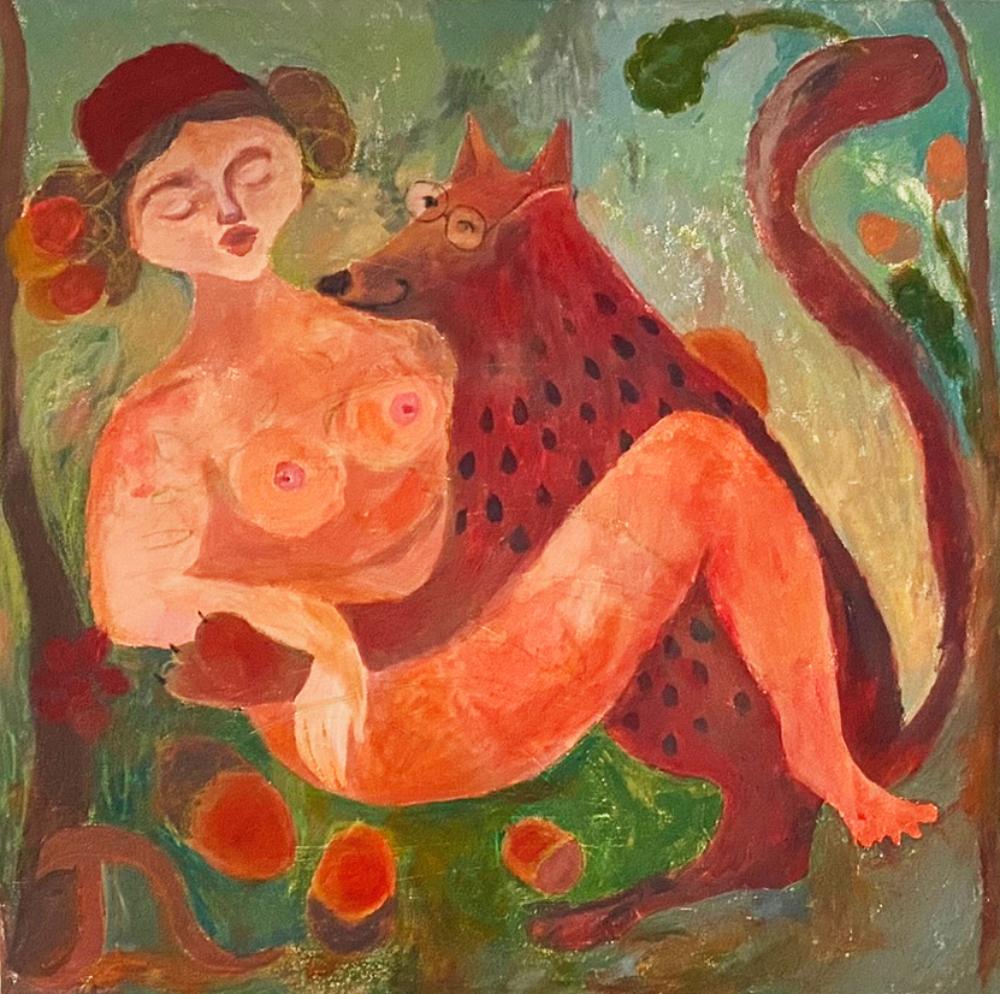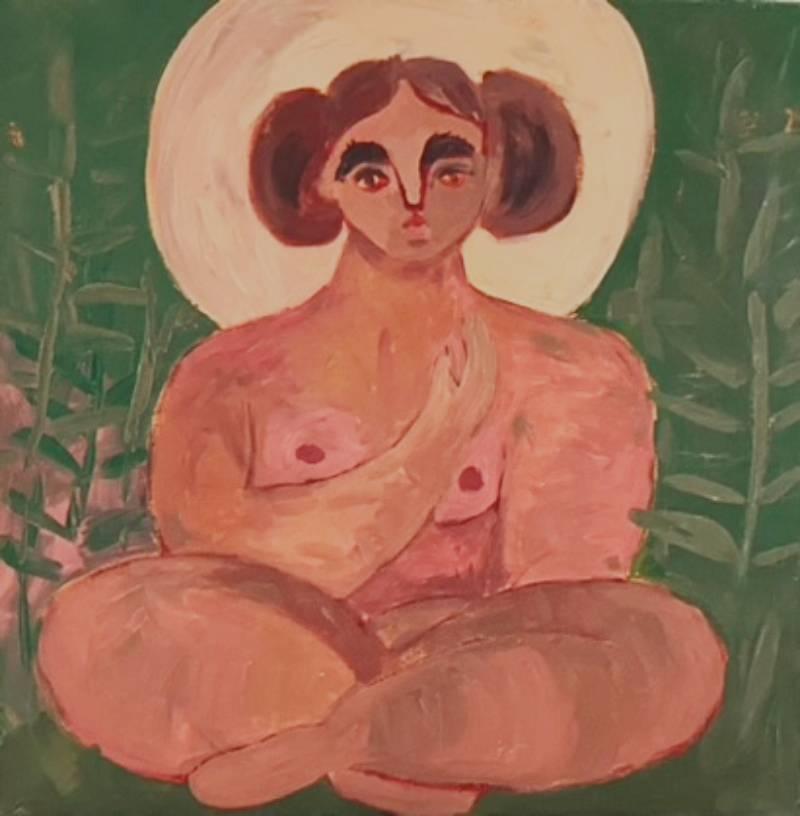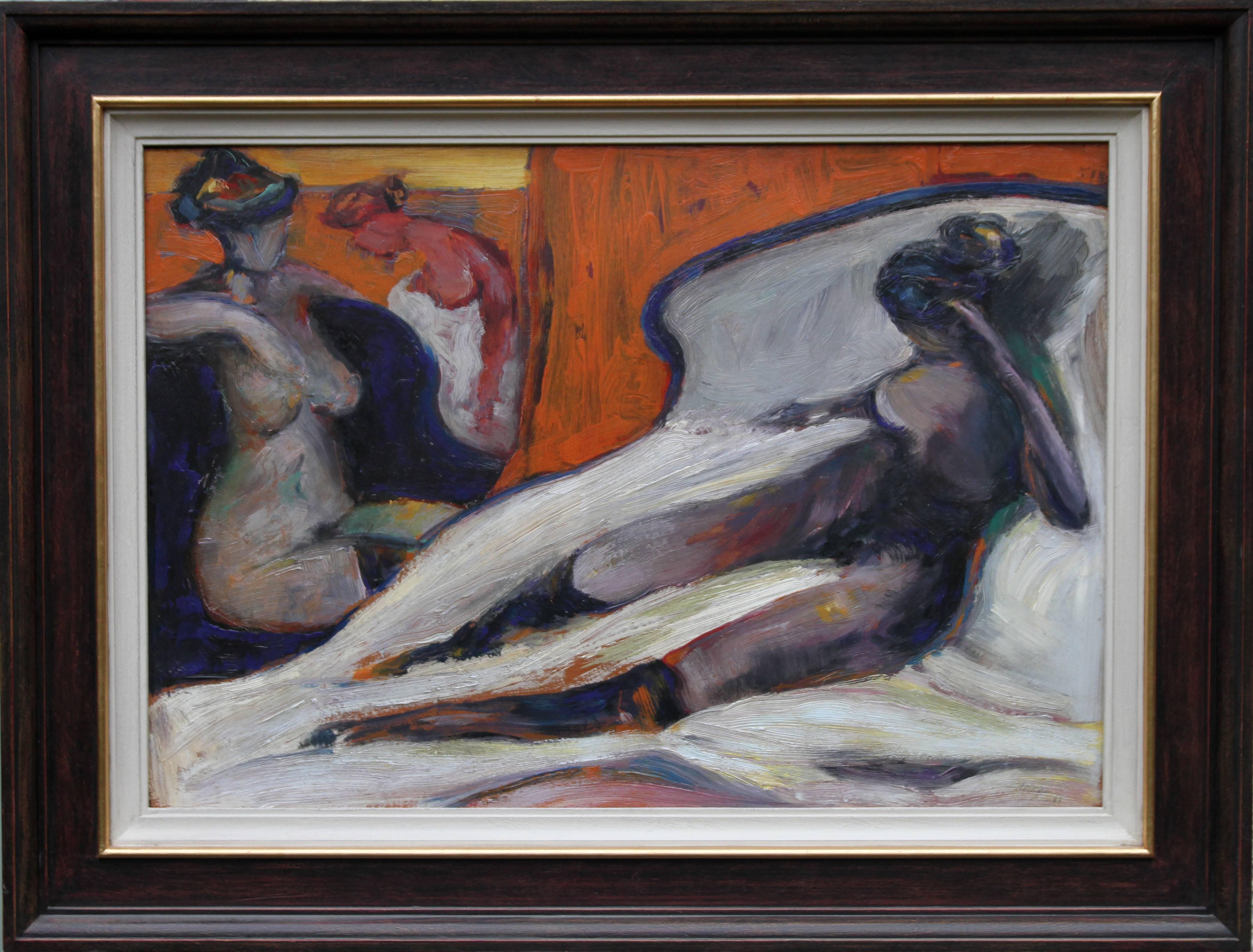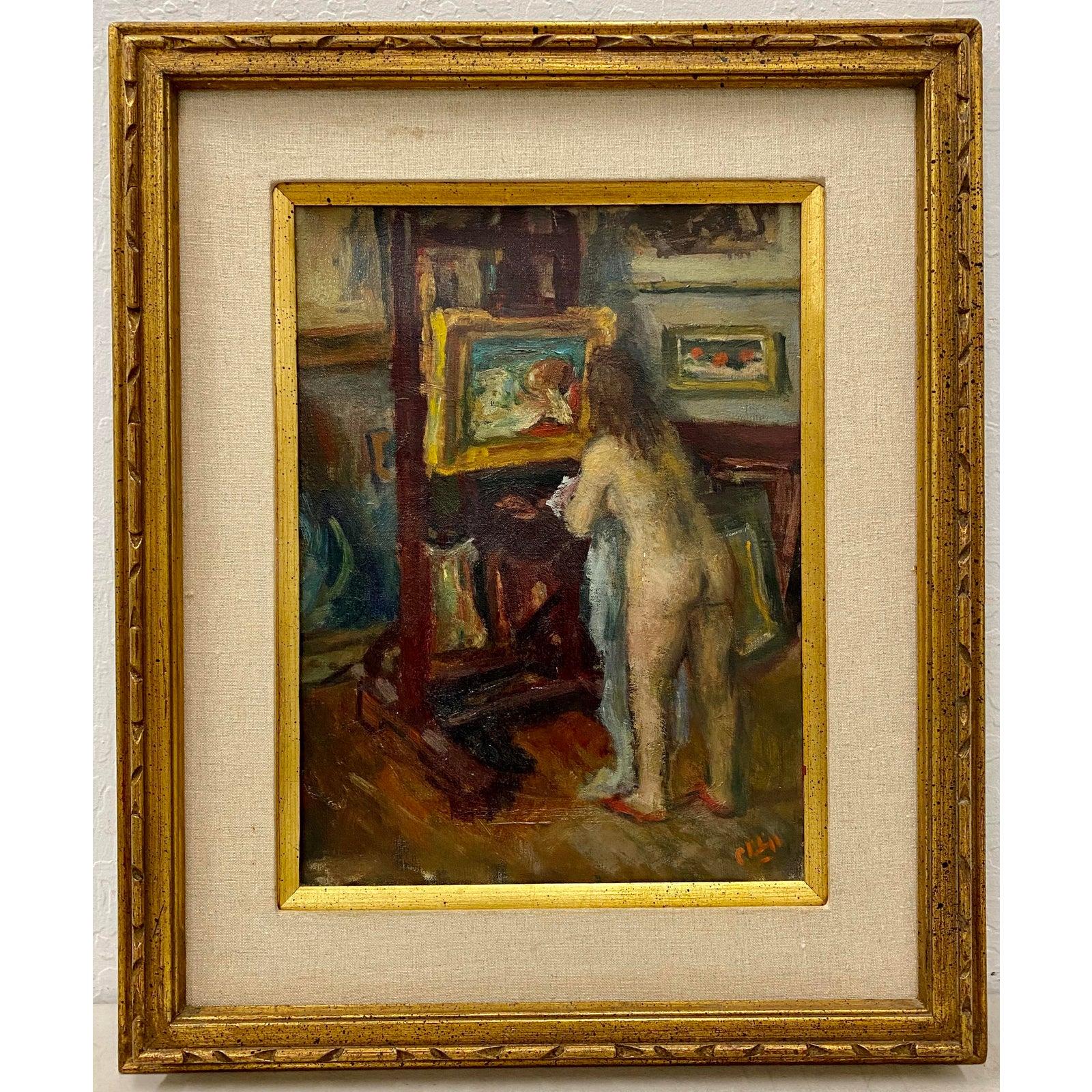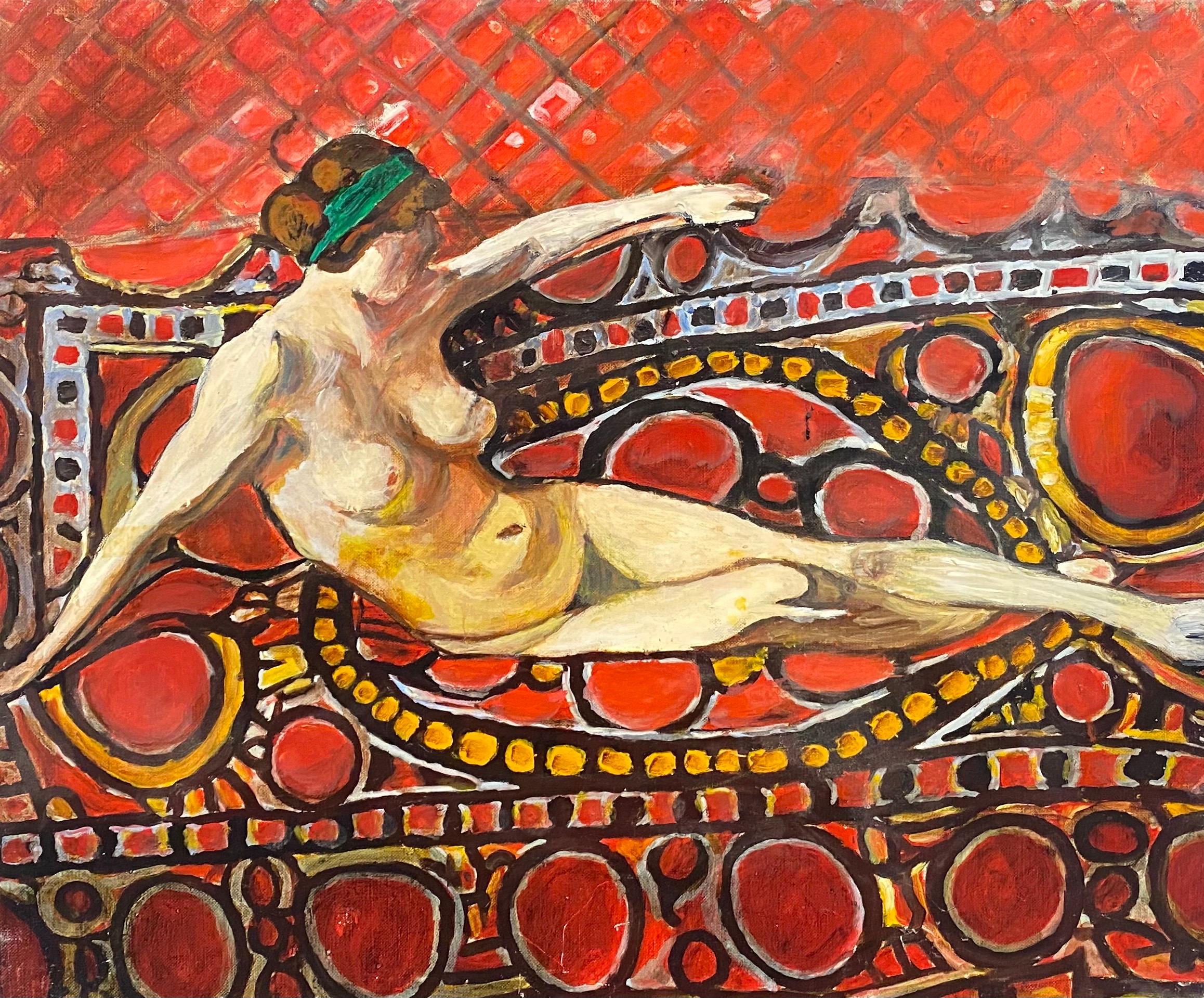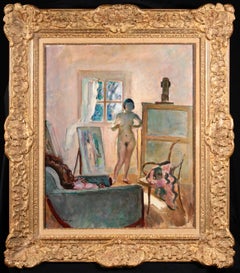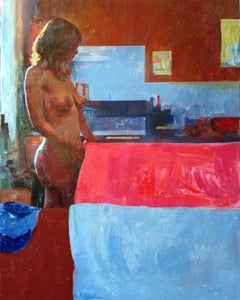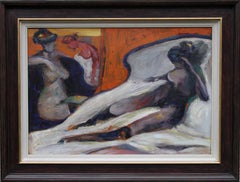
Dana and the Shower of Gold
View Similar Items
Want more images or videos?
Request additional images or videos from the seller
1 of 3
Léon François ComerreDana and the Shower of Goldc.1880
c.1880
About the Item
- Creator:Léon François Comerre (1850 - 1916, French)
- Creation Year:c.1880
- Dimensions:Height: 10 in (25.4 cm)Width: 7 in (17.78 cm)
- Medium:
- Movement & Style:
- Period:
- Condition:
- Gallery Location:Marlow, GB
- Reference Number:Seller: LFA0497BF1stDibs: LU41531959373
About the Seller
5.0
Platinum Seller
These expertly vetted sellers are 1stDibs' most experienced sellers and are rated highest by our customers.
Established in 2001
1stDibs seller since 2016
671 sales on 1stDibs
Typical response time: 3 hours
More From This SellerView All
- Nu dans l'Atelier - Post Impressionist Nude in Interior Oil by Henri LebasqueBy Henri LebasqueLocated in Marlow, BuckinghamshireSigned oil on canvas nude in interior circa 1910 by French post impressionist painter Henri Lebasque. The work depicts the woman posing in the artist's studio. There are clothes drap...Category
1910s Post-Impressionist Nude Paintings
MaterialsCanvas, Oil
- Old Men with Kittens - Impressionist Oil, Figures in Interior by J F RaffaelliBy Jean-Francois RaffaelliLocated in Marlow, BuckinghamshireA wonderful oil on panel by French impressionist painter Jean-Francois Raffaelli depicting two old men seated in an interior. One is reading his paper as the other naps and there are several kittens on the floor. Painted in the artist's distinctive style. The work is accompanied by a certificate from Brame & Lorenceau and is included in the catalogue raisonne of the painter. Signature: Signed lower left Dimensions: Framed: 9.5"x8" Unframed: 5.5"x4" Provenance: Private collection - United States Original artists label verso Jean-François Raffaëlli's father was a failed Italian businessman and Raffaëlli himself was, among other things, a church chorister, actor and theatre singer. He then studied under Gérôme at the École des Beaux-Arts in Paris. He travelled to Italy, Spain and Algeria and on his return to France settled in Asnières. In 1876, on a trip to Brittany, he first saw the potential of realist subject matter, if treated seriously. He became involved in meetings of artists at the Café Guerbois, where the Impressionist painters used to gather. As a result, Degas, contrary to the advice of the group, introduced Raffaëlli to the Impressionist exhibitions - according to one uncertain source as early as the very first exhibition, at the home of Nadar, and certainly to those of 1880 and 1881. In 1904, Raffaëlli founded the Society for Original Colour Engraving. He first exhibited at the Salon de Paris in 1870 and continued to exhibit there until he joined the Salon des Artistes Français in 1881, where he earned a commendation in 1885, was made Chevalier of the Légion d'Honneur in 1889 and in the same year was awarded a gold medal at the Exposition Universelle. In 1906 he was made Officier of the Légion d'Honneur. He was also a member of the Société Nationale des Beaux-Arts. In 1884, a private exhibition of his work cemented his reputation. He contributed to several newspapers such as The Black Cat (Le Chat Noir) in 1885 and The French Mail (Le Courrier Français) in 1886 and 1887. He published a collection entitled Parisian Characters, which captured his favourite themes of the street, the neighbourhood and local people going about their lives. In 1880 he participated, with Forain, on the illustration of Joris Karl Huysmans' Parisian Sketches (Croquis Parisiens). He also illustrated Huysman's Works. As well as working as an illustrator, he also made etchings and coloured dry-points. His early attempts at painting were genre scenes, but once he was settled in Asnières he started to paint picturesque views of Parisian suburbs. From 1879 onwards, his subject matter drew on the lives of local people. These popular themes, which he treated with humanity and a social conscience, brought him to the attention of the social realist writers of the time such as Émile Zola. In addition to his realist style, Raffaëlli's dark palette, which ran contrary to the Impressionist aesthethic, helped to explain the opposition of those painters to his participation in their exhibitions. More concerned with drawing than colour, he used black and white for most of his paintings. Towards the end of his life, he lightened his palette, but without adopting any other principles of the Impressionist technique. After painting several portraits, including Edmond de Goncourt and Georges Clémenceau, he returned to genre painting, particularly scenes of bourgeois life. Later in his career, he painted mainly Breton-inspired sailors and views of Venice. His views of the Paris slums and the fortifications, sites which have almost completely disappeared, went some way towards establishing a genre in themselves and perpetuated the memory of the area: The Slums, Rag-and-Bone Man, Vagabond, Sandpit, In St-Denis, Area of Fortifications. His realistic and witty portrayal of typical Parisian townscapes accounts for his enduring appeal. Born in Paris, he was of Tuscan descent through his paternal grandparents. He showed an interest in music and theatre before becoming a painter in 1870. One of his landscape paintings was accepted for exhibition at the Salon in that same year. In October 1871 he began three months of study under Jean-Léon Gérôme at the École des Beaux-Arts in Paris; he had no other formal training. Raffaëlli produced primarily costume pictures until 1876, when he began to depict the people of his time—particularly peasants, workers, and ragpickers seen in the suburbs of Paris—in a realistic style. His new work was championed by influential critics such as J.-K. Huysmans, as well as by Edgar Degas. The ragpicker became for Raffaëlli a symbol of the alienation of the individual in modern society. Art historian Barbara S. Fields has written of Raffaëlli's interest in the positivist philosophy of Hippolyte-Adolphe Taine, which led him to articulate a theory of realism that he christened caractérisme. He hoped to set himself apart from those unthinking, so-called realist artists whose art provided the viewer with only a literal depiction of nature. His careful observation of man in his milieu paralleled the anti-aesthetic, anti-romantic approach of the literary Naturalists, such as Zola and Huysmans. Degas invited Raffaëlli to participate in the Impressionist exhibitions of 1880 and 1881, an action that bitterly divided the group; not only was Raffaëlli not an Impressionist, but he threatened to dominate the 1880 exhibition with his outsized display of 37 works. Monet, resentful of Degas's insistence on expanding the Impressionist exhibitions by including several realists, chose not to exhibit, complaining, "The little chapel has become a commonplace school which opens its doors to the first dauber to come along."An example of Raffaëlli's work from this period is Les buveurs d'absinthe (1881, in the California Palace of Legion of Honor Art Museum in San Francisco). Originally titled Les déclassés, the painting was widely praised at the 1881 exhibit. After winning the Légion d'honneur in 1889, Raffaëlli shifted his attention from the suburbs of Paris to city itself, and the street scenes that resulted were well received by the public and the critics. He made a number of sculptures, but these are known today only through photographs.[2] His work was also part of the painting event in the art competition at the 1912 Summer Olympics. In the later years of his life, he concentrated on color printmaking. Raffaëlli died in Paris on February 11, 1924 Museum and Gallery Holdings: Béziers: Peasants Going to Town Bordeaux: Bohemians at a Café Boston: Notre-Dame; Return from the Market Brussels: Chevet of Notre-Dame; pastel Bucharest (Muz. National de Arta al României): Market at Antibes; Pied-à-terre Copenhagen: Fishermen on the Beach Douai: Return from the Market; Blacksmiths Liège: Absinthe Drinker...Category
1890s Impressionist Figurative Paintings
MaterialsPanel, Oil
- Cottage at Sundown - Impressionist Oil, Landscape at Sunset by Henri DuhemBy Henri DuhemLocated in Marlow, BuckinghamshireSigned and dated impressionist oil on panel landscape by French painter Henri Duhem. The work depicts a view of a cottage in a rural landscape. Smoke escapes the chimney and contrast...Category
1910s Impressionist Landscape Paintings
MaterialsPanel, Oil
- Fevrier 1907 - Impressionist Oil, Snowy Winter Landscape by Henri DuhemBy Henri DuhemLocated in Marlow, BuckinghamshireSigned and dated oil on panel landscape by French impressionist painter Henri Duhem. The piece depicts a view of artists's home and garden. It is a winter scene with snow laying heavy on the ground. The sun has gone down and the light from a tall window spills onto the snowy ground. Signature: Signed lower left and dated 1907 verso Dimensions: Unframed: 8.5"x12" This painting is not currently framed but a suitable frame can be sourced if required Provenance: The artist's estate Descendant of an old Flemish family, Henri Duhem was born in Douai on April 7, 1860. He worked as a lawyer at the Bar of the Court of Douai from 1883, he practiced at the same time his passion for drawing and watercolor. In 1887, he enrolled in Henri Harpignies' drawing course in Paris and, at the same time, befriended the painter Émile Breton...Category
Early 1900s Impressionist Landscape Paintings
MaterialsOil, Panel
- Vase de Fleurs - Impressionist Still Life Flowers Oil Painting by Edouard CortesBy Édouard Leon CortèsLocated in Marlow, BuckinghamshireSigned impressionist oil on panel still life circa 1920 by French painter Edouard Cortes. The work depicts a vase of autumnal coloured flowers placed on a wooden ledge in front of a ...Category
1920s Impressionist Still-life Paintings
MaterialsPanel, Oil
- Nymphs with Butterflies - Impressionist Nude in Landscape Oil by Abel FaivreBy Jules-Abel FaivreLocated in Marlow, BuckinghamshireSigned impressionist figure in landscape oil on canvas circa 1895 by French painter, illustrator and cartoonist Abel Faivre. The work depicts a water nymph with flowing red hair throwing flowers into a river. There are butterflies by her side. The sun set is lighting the sky red. Signature: Signed lower left Dimensions: Framed: 22"x19" Unframed: 16"x13" Provenance: Private French collection Born 30 March 1867, in Lyons; died August 1945. Painter, watercolourist, pastellist, draughtsman, illustrator. Genre scenes, portraits, figures, nudes, interiors, still-lifes (fruit). Humorous cartoons...Category
1890s Impressionist Nude Paintings
MaterialsCanvas, Oil
You May Also Like
- Red RoomBy Hollis DunlapLocated in Denver, CONude figure in bright red interiorCategory
2010s American Impressionist Interior Paintings
MaterialsPanel, Oil
$6,000 - Women Observed - Scottish art Edinburgh Expressionist artist nude oil paintingBy Robin PhilipsonLocated in London, GBA superb oil on panel nude portrait by the noted Scottish artist Sir Robin Philipson PRSA. A fabulous painting painted circa 1970, the composition three women in various states of un...Category
1970s Impressionist Nude Paintings
MaterialsOil
- Antique Signed Nude Woman Interior Portrait Modernist Signed Framed Oil PaintingLocated in Buffalo, NYAntique impressionist nude interior portrait painting. Oil on canvas, circa 1950. Housed in a vintage frame. Image size, 14L x 20H.Category
1950s Impressionist Nude Paintings
MaterialsOil, Canvas
$716 Sale Price20% Off - Antique American Impressionist Reclining Nude Woman Portrait Framed Oil PaintingLocated in Buffalo, NYAntique American interior nude portrait oil painting. Oil on canvas. Framed. Signed on verso.Category
1910s Impressionist Nude Paintings
MaterialsCanvas, Oil
$1,196 Sale Price20% Off - 'The Red Hand-Towel' Munich School, Impressionist, Dortmund Kunstakademie, ParisBy Carl Otto MüllerLocated in Santa Cruz, CAInitialed lower left 'C.O.M.' for Carl Otto Müller i(German, 1901-1970), and dated '69'. Additionally dated, verso, '1969' and titled, 'Myriam, Das Rote Handtusch'. Displayed in a pe...Category
1960s Impressionist Nude Paintings
MaterialsOil, Board
- Robert Phillipp "Corner of My Studio" Original Painting c.1968By Robert PhilippLocated in San Francisco, CARobert Phillipp "Corner of My Studio" Original Painting c.1968 Original oil on canvas. Dimensions 12" x 16". The frame measures 16" x 20". Signed low...Category
Mid-20th Century Impressionist Interior Paintings
MaterialsOil, Canvas
